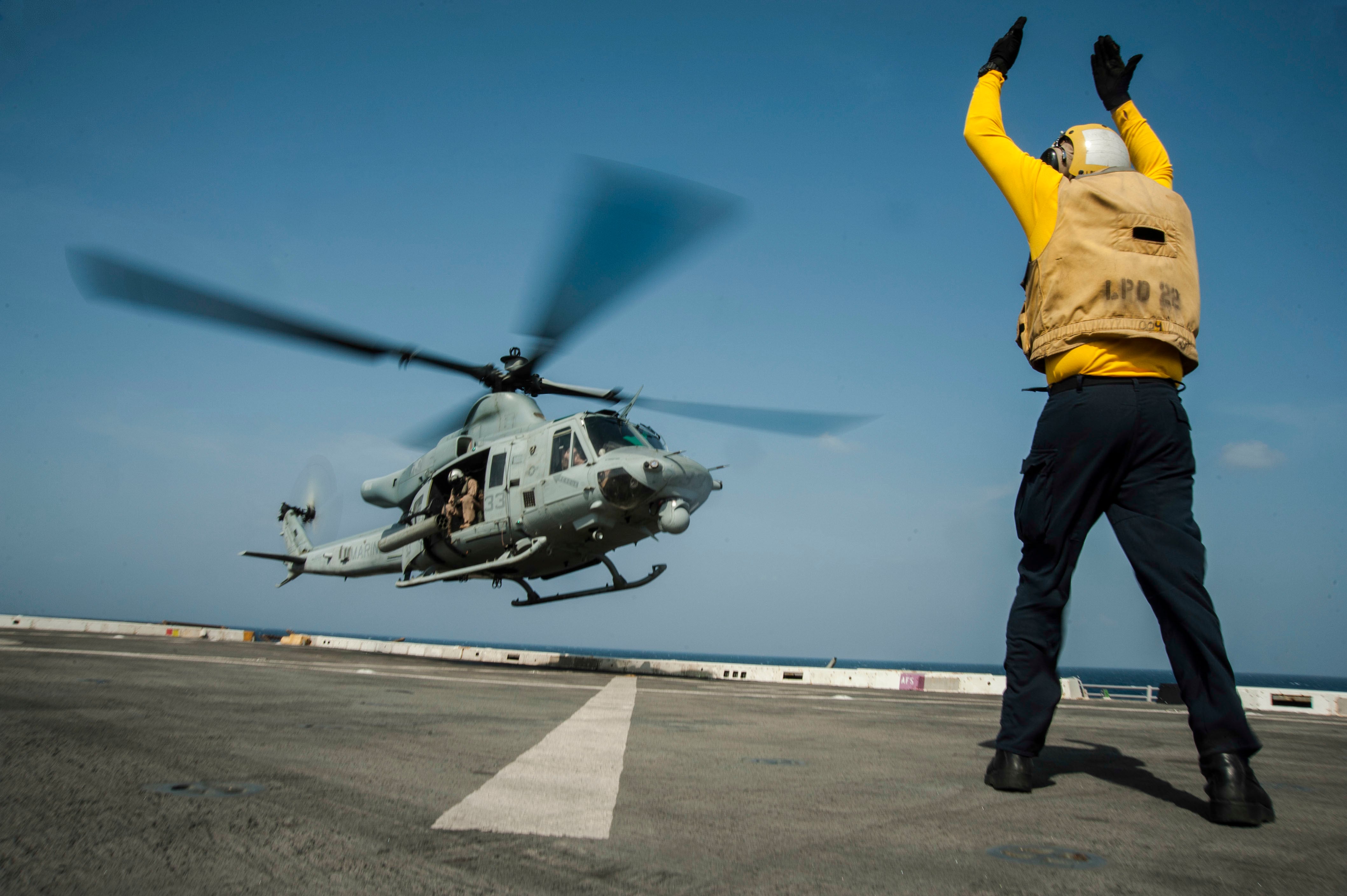WASHINGTON — At the top of the U.S. Marine Corps’ 2023 spending wish list is funding for an amphibious warship the U.S. Navy doesn’t plan to buy.
The Navy announced in its March 28 fiscal 2023 budget request rollout that it would buy one last amphibious transport dock, LPD-32, and then end the production line.
The Marines’ number-one item in the so-called unfunded priorities list is $250 million in advanced procurement funding for LPD-33.
Advanced procurement funding allows the contractor, in this case Ingalls Shipbuilding, to start buying materials and ship systems that take longer to deliver, with the expectation that the rest of the ship’s cost would be funded in a future year.
The two services clearly have had different perspectives on the future of the amphibious force — which the Marines need to get around, but the Navy must pay for in ship acquisition, manning for ship’s company, ship maintenance and modernization and other costs.
Throughout the late 2010s, the Marines touted a 38-ship requirement, though the Navy would discuss a fiscally constrained goal of 33 amphibious ships.
The Navy’s most recent long-range planning documents show an amphibious ship force of 24 to 28. An amphibious ship requirements study, which is still ongoing and should be concluding soon, will determine the exact requirement.
Marines say this is way too low.
Marines say 31 ships — 10 amphibious assault ships that can carry fixed-wing jets, and 21 LPD Flight I and Flight II ships that carry helicopters, connectors and ground equipment — is now the right number. 28, they argue, adds risk to their ability to respond to an emergency in a timely manner. Leaders haven’t addressed what a 24-ship force would mean for their operational and training plans.
It’s unclear what will ultimately decide the fate of the LPD production line. Congress has been highly supportive of the ship program in the past, continually adding ships to the program of record throughout the 2010s until the Navy decided to build another 13-ship batch of Flight II LPDs. Now the Navy plans to truncate that at just three Flight IIs. Lawmakers could side with the Marine Corps and add funding for LPD-33, keeping the line at Ingalls Shipbuilding open for now despite an uncertain future.

Elsewhere in the unfunded priorities list, the Marines also have $2.3 billion in spending items to support the Force Design 2030 transformation effort.
This includes $456 million for 12 Ground/Air Task Oriented Radars, $358 million for three additional F-35B vertical takeoff-variant Joint Strike Fighters; $313 million for three additional F-35C carrier-variant JSFs, $253 million for two additional KC-130J transport and refueling aircraft, $250 million for two additional CH-53K King Stallion heavy lift helicopters and $117 million for Joint Light Tactical Vehicles and trailers.
This Force Design 2030 funding also invests in spares and trainers for the aircraft, research and development for an air traffic control function for the G/ATOR radar and the Marine Air Defense Integrated System (MADIS) Increment I.
The overall UPL also includes $120 million for MV-22 Osprey nacelle improvement efforts kits and a common configuration block upgrade program, digital interoperability efforts to connect forces in the air and on the ground, extreme cold weather gear for reserve component forces, and a range of construction projects to improve facilities like barracks and hangars.
Megan Eckstein is the naval warfare reporter at Defense News. She has covered military news since 2009, with a focus on U.S. Navy and Marine Corps operations, acquisition programs and budgets. She has reported from four geographic fleets and is happiest when she’s filing stories from a ship. Megan is a University of Maryland alumna.





